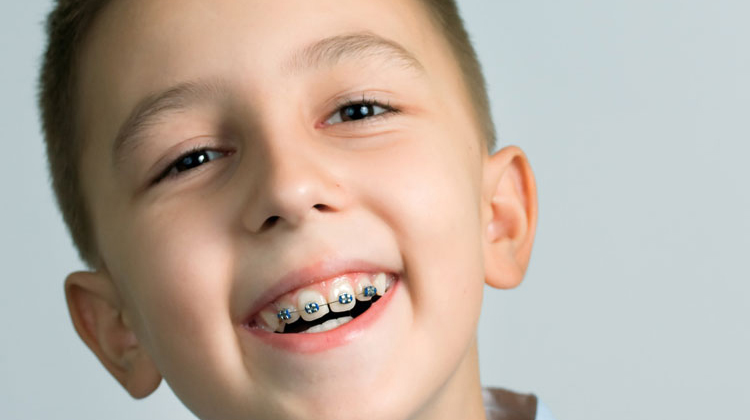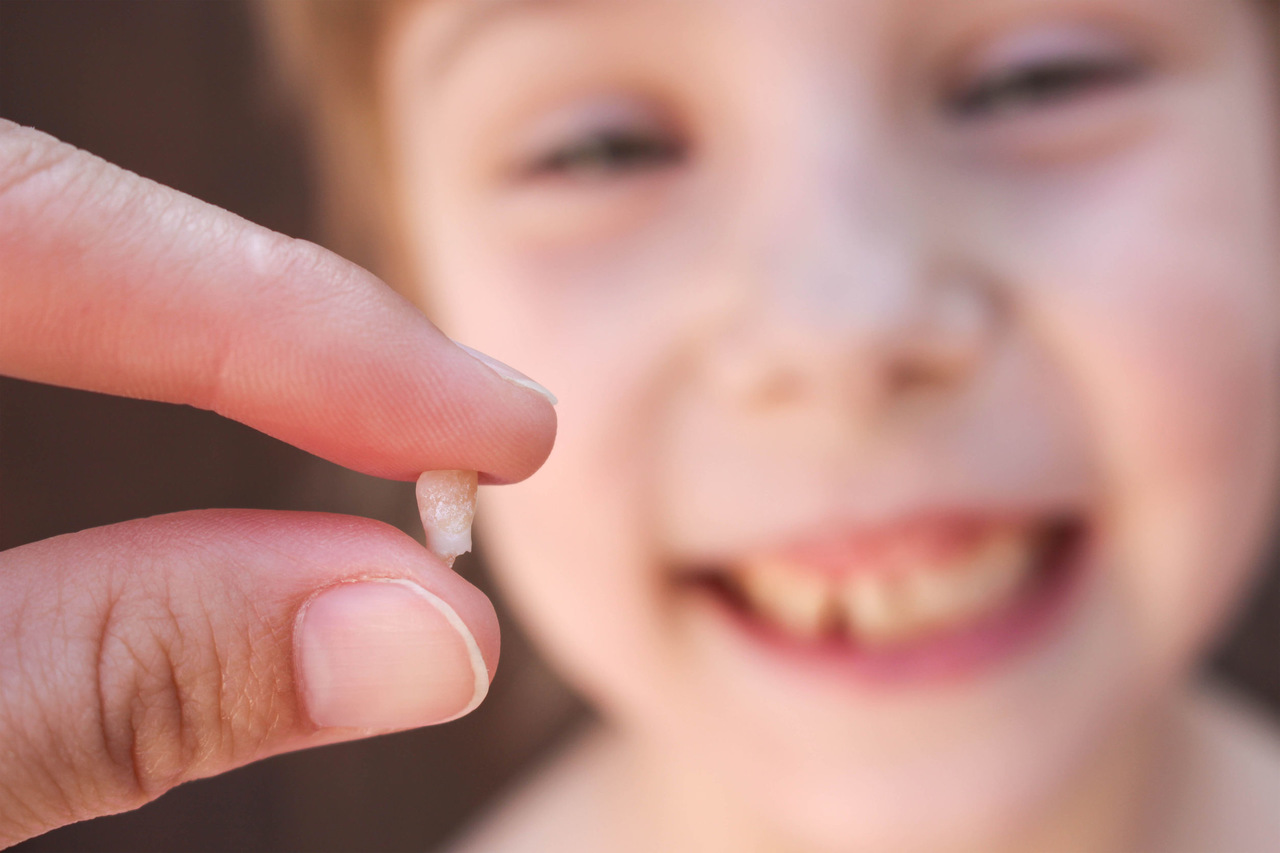Dental fillings in children are a common dental procedure aimed at restoring teeth damaged by cavities or other issues. However, many parents still wonder, “Is it necessary to get dental fillings for children?” Let’s explore the benefits and potential risks of pediatric dental fillings with Amanda Dental Clinic.
Should Children Get Dental Fillings?
Many parents tend to overlook the care and treatment of decayed baby teeth, assuming they are only temporary. However, untreated cavities in baby teeth can severely affect the eruption of permanent teeth and a child’s overall health.
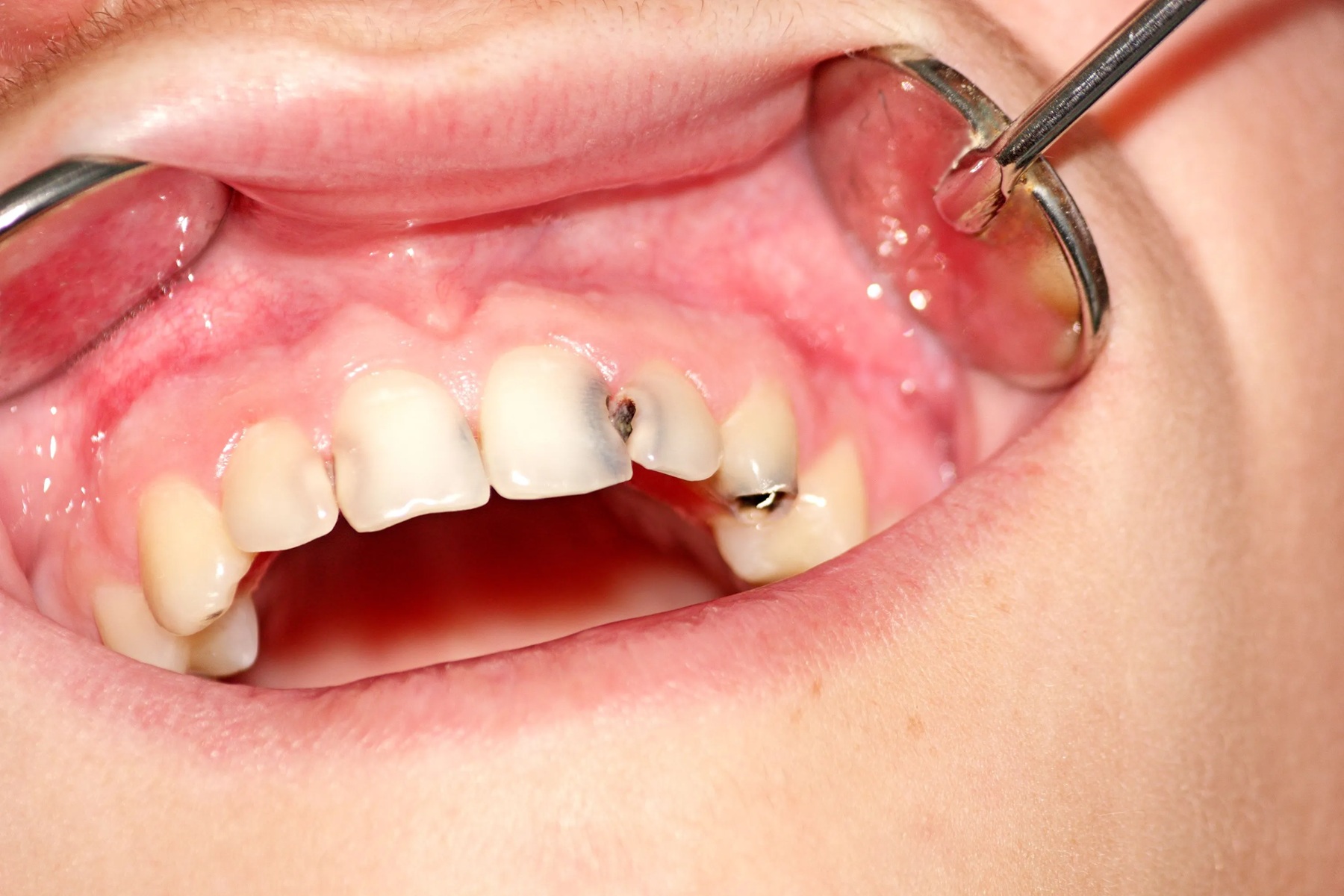
Dentists recommend treating decayed baby teeth with fillings to maintain oral health. If cavities become severe, children may require root canal treatment or tooth extraction. Early loss of baby teeth not only delays jawbone development but also causes a mismatch between the size of permanent teeth and jawbone, resulting in crowding or misalignment. Additionally, missing baby teeth can significantly impact a child’s speech.
Today, pediatric dental fillings are an effective technique to seal cavities and restore baby teeth. The procedure is simple, gentle, painless, and very safe for children.
The treatment involves removing decayed portions and using a special material to fill the tooth. It only takes about 15–30 minutes. Once treated, the toothache subsides, and the tooth regains its original shape and chewing function, remaining in place until it naturally falls out.
When Do Children Need Baby Tooth Fillings?
When deciding whether to fill baby teeth, parents should consider two main factors: the child’s age and the current condition of the tooth (whether it’s about to fall out, cavity size and depth, broken or chipped due to trauma, spacing between teeth, recurring inflammation or infection). If the cavity is small and the tooth will fall out soon, no intervention may be the best option.
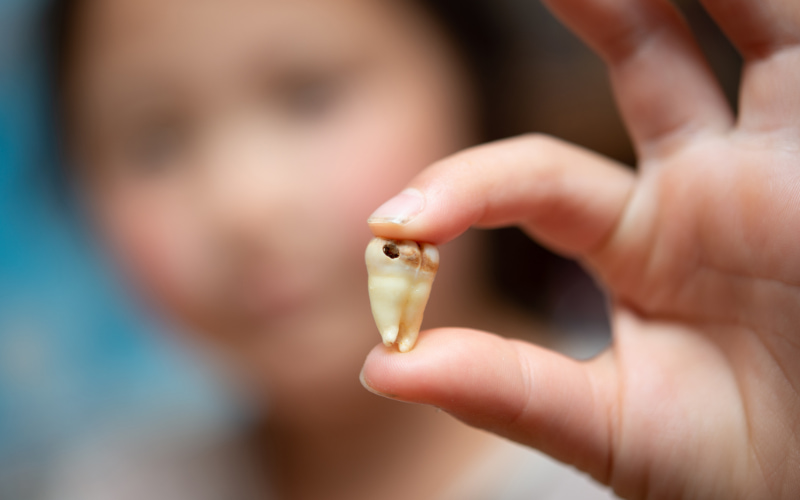
Conversely, if the dentist determines the tooth will remain for 1–2 more years, removing the decay and filling the tooth is necessary. In cases of severe decay or infection, extraction may be needed to prevent further damage to surrounding teeth.
There’s no fixed age, but children as young as 3 can undergo dental fillings. It’s important to take your child to the dentist for an evaluation at the first sign of decay or other dental issues.
What Is the Best Method for Dental Fillings in Children?
Dental filling is a technique that uses restorative materials to fill cavities or restore damaged, chipped, or cracked teeth, protecting them from further harm. Depending on the severity and type of damage, the dentist will choose the most suitable filling method.
Preventive Filling
Preventive fillings are used to seal natural grooves and pits on the tooth surface, especially molars, where food and bacteria easily accumulate and cause decay. This procedure forms a protective barrier, preventing the formation and spread of cavities.
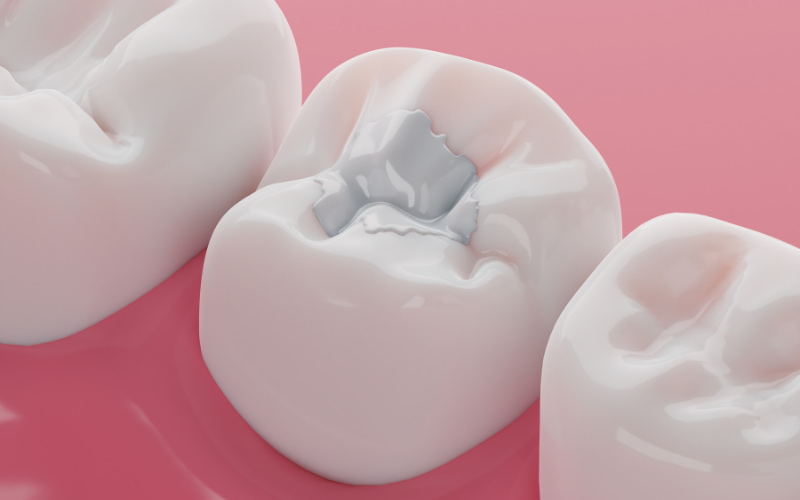
Sealants are typically used on the first molars (around age 6) and second molars (around age 12) if they show early signs of decay or small cracks. The process includes cleaning the grooves with a brush and polishing powder, applying a bonding solution, then sealing the grooves with a filling compound, which is either self-curing (chemical polymerization) or light-cured (photo polymerization).
Therapeutic Fillings
In cases of severe decay affecting the pulp, therapeutic filling is recommended. The dentist will clean out the cavity, especially if the pulp is inflamed, then fill the area with composite or amalgam to prevent further bacterial infection and restore chewing ability.
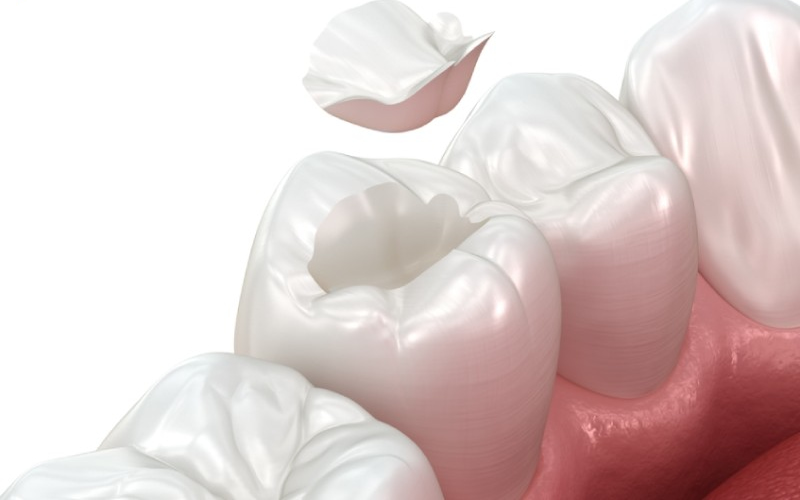
Standard Pediatric Dental Filling Procedure
The child’s filling procedure includes clearly defined steps:
Examination and Consultation
- The dentist checks the overall condition of the child’s teeth and identifies decay that needs treatment.
- They explain the procedure and suitable materials to the parents and child.
Anesthesia (if necessary)
- If the child is anxious or the cavity is large, local anesthesia is used to ensure comfort during the procedure.
Cleaning the Tooth
- The dentist removes all decayed tissue, bacteria, and debris using specialized tools to ensure a clean, dry surface for better adhesion.
Filling with Suitable Material
- The dentist selects the best material based on the tooth’s condition—composite, amalgam, or glass ionomer.
- The material is applied and shaped to match the natural tooth, then cured with a special light.
Final Check and Finish
- The dentist checks the fit of the filling, removes any excess material, and adjusts it for comfort.
- The surface is polished for a smooth, natural look.
- Parents receive aftercare instructions for their child’s oral hygiene and diet.
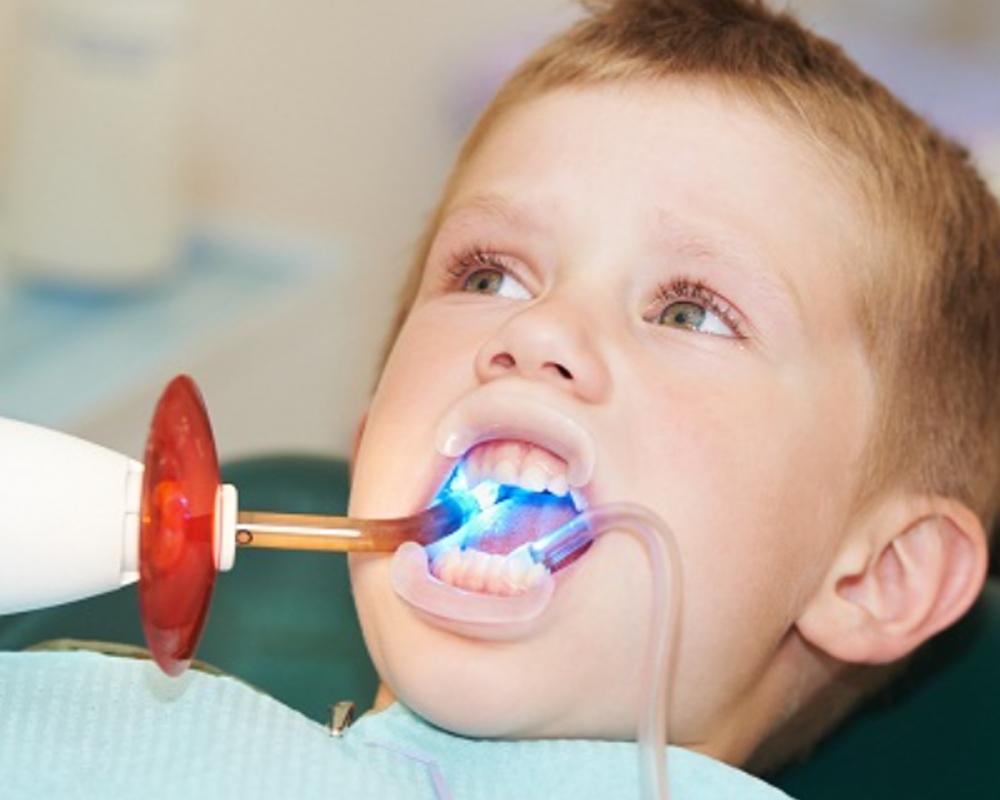
How Much Does Dental Filling Cost for Children?
Fillings are a common dental procedure to restore teeth damaged by decay, chipping, or abrasion. In children, filling baby teeth is essential to preserve oral health, restore function and aesthetics, and prevent serious future dental issues.
The cost of pediatric fillings varies depending on:
- Tooth condition:
- Baby teeth are usually less expensive to treat than permanent teeth.
- Mild cavities cost less than severe ones.
- Front teeth may have different pricing than molars.
- Filling materials:
- Amalgam: Traditional and lower cost.
- Composite: Aesthetic, usually more expensive.
- GIC: Suitable for baby teeth.
- Dental clinic:
- Urban clinics tend to charge more than rural ones.
Here is Amanda Dental Clinic’s detailed pricing for children’s fillings:
| Service | Unit | Price (VND) |
| Eugnat filling for baby tooth | Tooth | 100,000 |
Post-Filling Dental Care for Children
Dental fillings are effective for treating cavities in children. However, proper care after treatment is crucial for lasting results and preventing recurrence.
Proper Diet
- Avoid hard, chewy, sticky foods: For the first few hours, the filling may not fully harden. Avoid gum, hard candy, or ice.
- Avoid very hot or cold foods: Extreme temperatures can irritate the tooth and affect the filling’s durability.
- Limit sugary and acidic foods: These cause decay. Limit such foods post-filling.
- Increase calcium and vitamins: Helps strengthen teeth. Include dairy, leafy greens, and fresh fruits and vegetables in your child’s diet.
Proper Oral Hygiene
- Gentle brushing: Use a soft brush and fluoride toothpaste to brush twice daily, especially after meals and before bed.
- Flossing: Teach your child to use dental floss to clean between teeth.
- Saltwater rinses: Rinse with saline to disinfect and soothe gums.
- Mouthwash (if advised): Use dentist-recommended rinses if needed.
Regular Checkups
- Follow-up visits: Regular dental checkups help monitor fillings and address issues early.
- Report abnormalities: If your child feels pain, sensitivity, or notices chipped fillings, visit the dentist immediately.
Do Baby Tooth Fillings Hurt?
Fillings are quick and painless, usually taking 15–20 minutes. However, children may feel scared and uncooperative. Parents should reassure their child before the appointment. Choosing a clinic with child-friendly dentists is essential for a smooth experience.
Where Is the Best and Safest Place for Child Dental Fillings?
Amanda Dental Clinic is a trusted name in children’s oral care, widely recommended by parents. With years of experience, the clinic provides high-quality dental services to ensure healthy, bright smiles for kids.
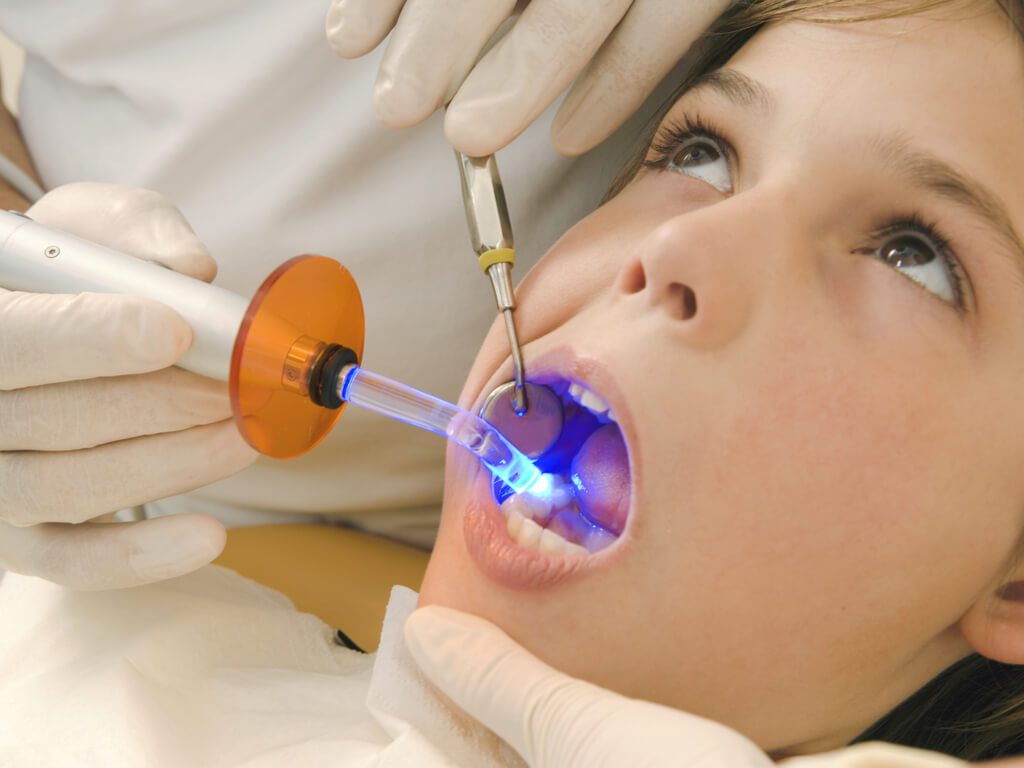
Professional and Caring Dentists
At Amanda Dental, your child will be treated by experienced general dentists who not only perform fillings gently and precisely but also offer honest advice and personalized treatment plans. They understand child psychology and create a comfortable environment for young patients.
Modern Equipment and Advanced Technology
Amanda Dental Clinic is equipped with advanced tools to ensure safe, effective, and pain-free treatment. All materials used are high-quality and safe for children’s health.
Friendly and Comfortable Clinic Environment
Amanda Dental Clinic features bright, playful décor to make children feel at ease. This child-friendly space reduces anxiety and helps kids enjoy their dental visits.
Dental fillings for children not only protect baby teeth and prevent decay but also provide a solid foundation for healthy permanent teeth. Parents should prioritize their child’s oral health from an early age with regular checkups and timely fillings for a strong, confident smile.




